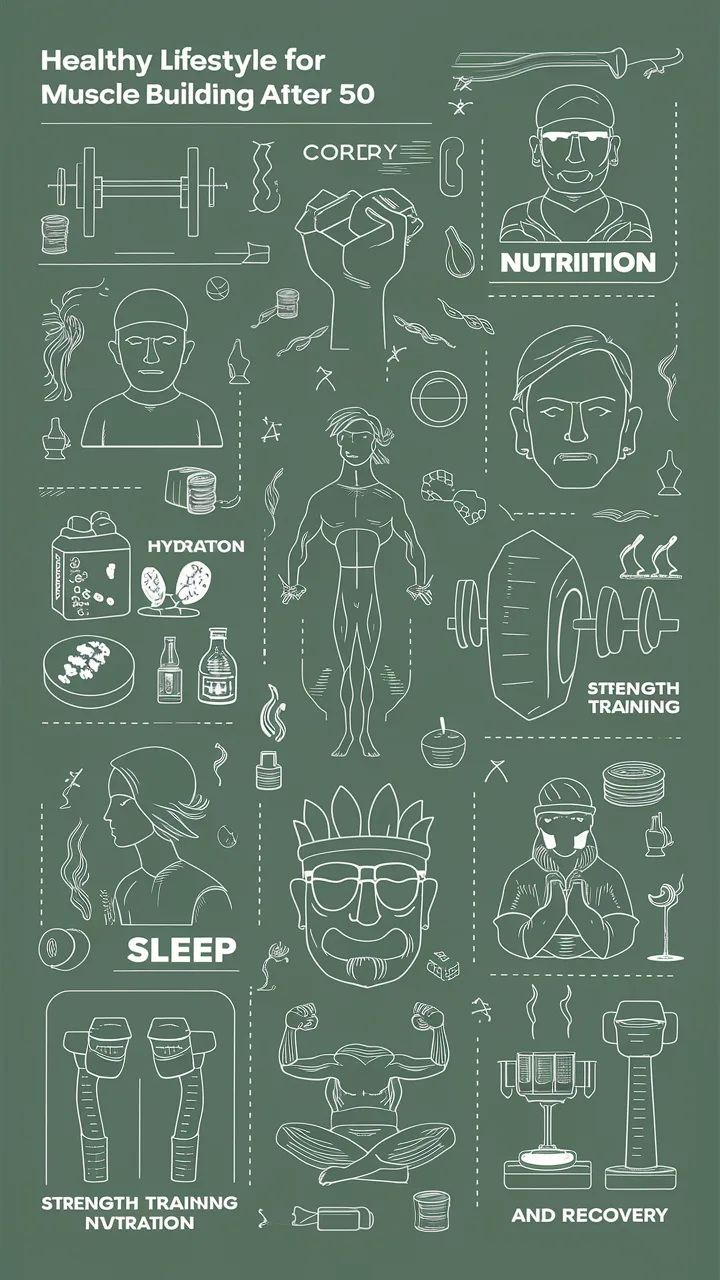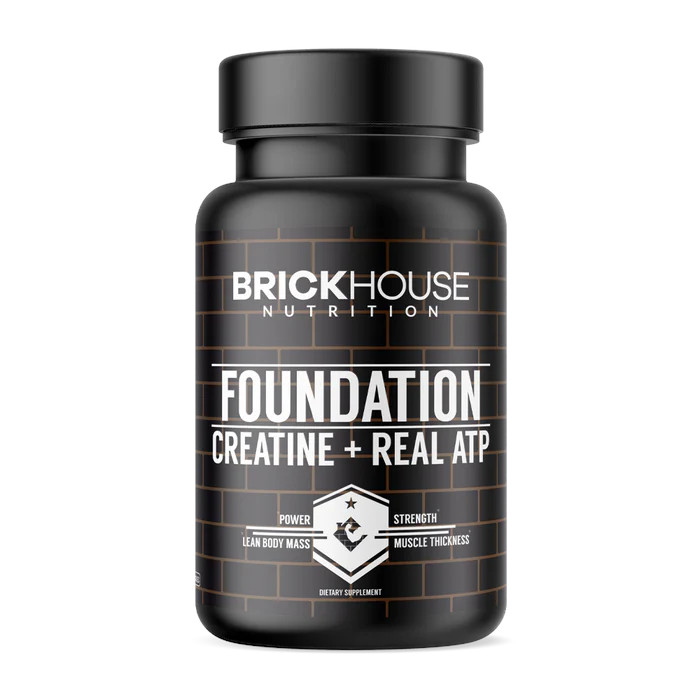Fast Track to Muscle Building After 50: Easy Steps

Effective Strength Training Routines for Men Over 50
So how to build muscle after 50? You might think that age is a barrier to achieving your fitness goals, but that couldn’t be further from the truth. With the right approach and dedication, you can still pack on muscle and get in the best shape of your life. In this article, we’ll discuss some easy steps you can take to build muscle at 50.
First and foremost, it’s important to focus on strength training. Strength training is essential for building muscle mass and increasing overall strength. As we age, our muscle mass naturally decreases, so it’s crucial to incorporate strength training into your routine to combat this loss. Start by incorporating compound exercises such as squats, deadlifts, bench presses, and rows into your workouts. These exercises work multiple muscle groups at once, making them highly effective for building muscle.
In addition to strength training, it’s important to pay attention to your nutrition. Building muscle requires a calorie surplus, so make sure you’re eating enough to support your muscle-building goals. Focus on consuming lean protein sources such as chicken, fish, eggs, and tofu, as well as complex carbohydrates like brown rice, sweet potatoes, and quinoa. These foods will provide your body with the nutrients it needs to repair and build muscle.
Another key component of building muscle over 50 fast is adequate rest and recovery. As we age, our bodies may take longer to recover from intense workouts, so it’s important to listen to your body and give it the rest it needs. Make sure to get at least 7-8 hours of sleep per night, as this is when your body does most of its repair and growth. Additionally, consider incorporating rest days into your routine to allow your muscles to recover and prevent over-training.
Consistency is also key when it comes to building muscle after 50. Make sure to stick to a regular workout routine and stay committed to your fitness goals. Set realistic goals for yourself and track your progress to stay motivated. Remember, building muscle takes time, so be patient and trust the process.
If you’re looking to build muscle after 50, consider incorporating high-intensity interval training (HIIT) into your routine. HIIT workouts are a great way to burn fat and build muscle simultaneously. These workouts involve short bursts of intense exercise followed by brief periods of rest, making them highly effective for building muscle and increasing cardiovascular fitness.
Gaining muscle after 50 is definitely achievable with the right approach. Focus on strength training, nutrition, rest, and workout recovery. Incorporate compound exercises, eat a balanced diet, get enough rest, and consider adding HIIT workouts to your routine. By following these easy steps, you’ll be well on your way to building muscle fast and getting in the best shape of your life.

Nutritional Strategies for Muscle Growth in Older Men
Many men in their 50s and beyond are looking to maintain or even increase their muscle mass as they age. The good news is that it’s possible to build muscle at any age, as long as you’re willing to put in the work. In this article, we’ll discuss some easy steps you can take to help speed up the muscle-building process.
One of the most important factors is supplements to build muscle after 50. As we age, our bodies require more protein to maintain and build muscle mass. Aim to include a good source of protein in every meal, such as lean meats, fish, eggs, dairy, or plant-based proteins like tofu or legumes. Protein shakes can also be a convenient way to increase your protein intake, especially after a workout.
In addition to protein, it’s important to make sure you’re getting enough calories to support muscle growth. If you’re trying to build muscle, you’ll likely need to eat more than you did when you were younger. Focus on nutrient-dense foods like fruits, vegetables, whole grains, and healthy fats to ensure you’re getting the energy you need to fuel your workouts and recover from them.
Another key aspect of nutrition for muscle building is timing. Aim to eat a balanced meal or snack containing protein and carbohydrates within 30 minutes to an hour after your workout. This will help replenish glycogen stores and provide your muscles with the nutrients they need to recover and grow. Pre-workout nutrition is also important, so consider having a small snack containing protein and carbohydrates about an hour before you hit the gym.
In addition to protein and calories, hydration is also crucial for muscle growth. Make sure you’re drinking enough water throughout the day, especially before and after your workouts. Dehydration can impair muscle function and recovery, so aim to drink at least 8-10 glasses of water per day, more if you’re sweating heavily during your workouts.
Supplements for building muscle after 50.
Supplements can also be a helpful tool for older men looking to build muscle. Creatine, for example, has been shown to increase muscle mass and strength in older adults. Branched-chain amino acids (BCAAs) can also help support muscle growth and recovery. Talk to your doctor or a nutritionist before starting any new supplements to ensure they’re safe and appropriate for you.
Building muscle after 50 is possible with the right approach to nutrition. Focus on getting enough protein, calories, and hydration to support muscle growth, and consider adding supplements like creatine or BCAAs to your routine. Remember that consistency is key, so stick to your nutrition plan and keep up with your workouts to see the best results. With a little dedication and hard work, you can build muscle and feel stronger and more confident in your 50s and beyond.
Building muscle after 50 might seem daunting, but with the right approach, it can be both effective and rewarding. Here’s a comprehensive guide to help you achieve fast muscle-building with easy, actionable steps.
Step 1: Understand Your Body’s Changes
As you age, your body undergoes several changes that can affect muscle building:
- Loss of natural muscle mass: Sarcopenia, or age-related muscle loss, begins in your 30s and accelerates with age.
- Joint wear and tear: Years of use can lead to joint health issues.
- Decreased testosterone levels: This hormone, crucial for muscle growth, declines with age.
- Slower metabolism: This can affect how your body processes nutrients and builds muscle.
Step 2: Prioritize Strength Training
How to build muscle in your 50s? Strength training is the cornerstone of muscle building for men at any age, but it’s especially crucial after 50.
- Lift Heavy: Use weights that you can handle for 8-12 reps with proper form. This range is optimal for hypertrophy (muscle growth).
- Train Consistently: Aim for at least three strength training sessions per week. Full-body workouts are more effective than body part splits for older adults.
- Focus on Compound Exercises: These exercises work multiple muscle groups at once, making them efficient and effective. Examples include squats, deadlifts, bench presses, and rows.

Step 3: Incorporate Low-Impact Workouts
To protect your joints and avoid injury:
- Use Dumbbells and Resistance Bands: These tools are easier on the joints compared to barbells.
- Modify Exercises: For example, switch from barbell shoulder presses to dumbbell presses with a neutral grip to reduce shoulder strain.
- Include Bodyweight Exercises: Push-ups, planks, and lunges are excellent for building muscle without added stress on the joints.
Step 4: Optimize Nutrition
Nutrition plays a critical role in muscle building:
- Consume Enough Protein: Aim for 1.6 to 2.2 grams of protein per kilogram of body weight daily. Spread your protein intake throughout the day to maximize muscle protein synthesis.
- Stay Hydrated: Proper hydration is essential for muscle function and recovery.
- Consider Supplements: Research-proven supplements like whey protein, creatine, and branched-chain amino acids (BCAAs) can support muscle growth.
Step 5: Prioritize Recovery
Recovery is just as important as the workouts themselves:
- Rest Between Workouts: Allow 24-48 hours of rest between sessions targeting the same muscle groups.
- Get Quality Sleep: Aim for 7-9 hours of sleep per night to support muscle recovery and overall health.
- Listen to Your Body: Avoid working through pain and give yourself time to heal from any injuries.
Step 6: Stay Consistent and Patient
Building muscle takes time, especially after 50. Stay consistent with your workouts and nutrition, and be patient with your progress:
- Set Realistic Goals: Focus on incremental gains in strength and muscle size rather than expecting rapid transformations.
- Track Your Progress: Keep a workout journal to monitor your improvements and adjust your plan.
Actionable Plan of Action
Here’s a weekly plan to get you started on your muscle-building journey:
Monday: Full-Body Strength Training
- Warm-up: 10 minutes of light cardio
- Squats: 3 sets of 8-12 reps
- Bench Press: 3 sets of 8-12 reps
- Bent-over Rows: 3 sets of 8-12 reps
- Dumbbell Shoulder Press: 3 sets of 12-15 reps
- Cool-down: Stretching
Tuesday: Low-Impact Cardio
- 30 minutes of brisk walking or cycling
Wednesday: Full-Body Strength Training
- Warm-up: 10 minutes of light cardio
- Deadlifts: 3 sets of 8-12 reps
- Pull-ups or Lat Pulldowns: 3 sets of 8-12 reps
- Dumbbell Lunges: 3 sets of 12-15 reps
- Planks: 3 sets of 30-60 seconds
- Cool-down: Stretching
Thursday: Flexibility and Balance
- 30 minutes of yoga or balance exercises
Friday: Full-Body Strength Training
- Warm-up: 10 minutes of light cardio
- Leg Press: 3 sets of 8-12 reps
- Incline Dumbbell Press: 3 sets of 12-15 reps
- Seated Rows: 3 sets of 8-12 reps
- Dumbbell Bicep Curls: 3 sets of 12-15 reps
- Cool-down: Stretching
Saturday: Active Recovery
- Light activities like walking, swimming, or playing golf
Sunday: Rest and Post Workout Recovery
- Focus on rest, hydration, and nutrition
By following these steps and maintaining a consistent routine, you can build muscle effectively and safely after 50. Remember, the key is to adapt your workouts to your body’s needs and stay committed to your goals.

Recovery and Rest Techniques for Faster Muscle Building in Men Over 50
You might think that age is a barrier to achieving your fitness goals, but that’s not necessarily the case. With the right approach and a little bit of patience, you can still make significant gains in muscle mass and strength. So what is the best way to build muscle after 50?
One of the most important factors in building muscle is recovery. As we age, our bodies take longer to recover from intense workouts, so it’s crucial to prioritize rest and recovery. Make sure you’re getting enough sleep each night, as this is when your body repairs and builds muscle tissue. Aim for 7-9 hours of quality sleep per night to support your muscle-building efforts.
In addition to sleep, incorporating rest days into your workout routine is essential. Over-training can hinder your progress, so make sure to give your muscles time to recover between workouts. This doesn’t mean you have to be sedentary on rest days – light activities like walking or yoga can help promote blood flow and aid in recovery.
Another key aspect of recovery is nutrition for building muscle after 50. Make sure you’re fueling your body with the right nutrients to support muscle growth. Protein is essential for building and repairing muscle tissue, so make sure you’re getting an adequate amount in your diet. Aim for around 1 gram of protein per pound of body weight per day to support muscle growth.
In addition to protein, make sure you’re eating a balanced diet rich in fruits, vegetables, whole grains, and healthy fats. These nutrients will help support overall health and provide your body with the energy it needs to perform at its best.

Supplements can also be a helpful tool in supporting muscle growth. Creatine, for example, has been shown to increase muscle mass and strength when combined with resistance training. Branched-chain amino acids (BCAAs) can also help support muscle recovery and growth. Talk to your doctor or a nutritionist to see if these supplements might be beneficial for you.
Incorporating stretching and mobility work into your routine can also help support muscle recovery and prevent injury. As we age, our muscles tend to become tighter and less flexible, which can increase the risk of injury during workouts. Make sure to incorporate dynamic stretches before your workouts and static stretches after to help improve flexibility and prevent injury.
Finally, don’t forget the importance of hydration. Staying hydrated is crucial for overall health and can help support muscle recovery. Aim to drink at least 8-10 glasses of water per day, and more if you’re sweating heavily during workouts.
By prioritizing rest, nutrition, supplementation, and mobility work, you can support faster muscle building after 50. Remember, progress may be slower than it was in your younger years, but with consistency and dedication, you can still achieve your fitness goals. So don’t let age hold you back – get out there and start building muscle today!


